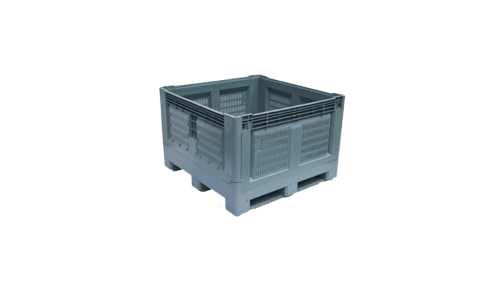For decades, wooden pallets have been the dominant force in the shipping and packaging industries, but just how safe and hygienic are they? The answer is a resounding ‘not very,’ with all sorts of potential contaminants that can compromise the cleanliness of a wooden pallet. In the past, this was simply a fact of the shipping business, but new technology and manufacturing techniques mean that there’s now a better alternative – high quality plastic pallets.
Plastic pallets have all sorts of benefits over their wooden cousins, but the most significant is undoubtedly their greater resistance to contamination. To really understand why plastic is such a great alternative, it’s important to consider the many ways wooden pallets can be compromised.
A very common pathogen found in wooden pallets is blue stain mould, and its growth is accelerated by high humidity
How are wooden pallets vulnerable?
There are all sorts of ways that wooden pallets can be jeopardised. Some of these are to do with the material itself, while others can be traced back to the way each pallet is constructed.
One of the most significant dangers with wood is mould, which can both grow and spread very quickly. A very common type found in wooden pallets is known as blue stain mould, and its growth is accelerated by high humidity – a significant issue in Australia particularly. If not controlled, mould can compromise the structural integrity of a pallet, as well as whatever is being shipped on it. The same goes for dust and spilled materials, which can be readily absorbed by wood and carry pathogens between shipments if not thoroughly cleaned.
Of course, not all contaminants are bacterial – physical dangers include nails and splinters, both of which can render an entire shipment unusable.


A solution: Plastic pallets
The great thing about plastic pallets is that their design and the materials used in constructing them all but eliminate the potential for contamination. First of all, each pallet is a single, moulded piece of either polyethylene or polypropylene. Not only does this get rid of any nooks or crannies for contaminants to hide, but the material itself won’t allow for dust to gather or mould to grow. Plastic is also suitable for use in any weather conditions, so there’s no need to worry about high-humidity environments affecting performance.


Finally, plastic pallets are much easier to clean than wooden counterparts, so in the event of a spill, it’s quick and easy to get them back to mint condition.
To find out more, or to learn about our specialist Hygiene Series, contact the team at Eco Pallets today.










Comments are closed.